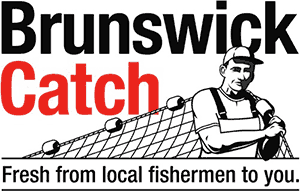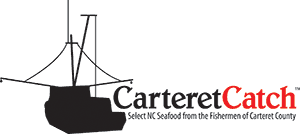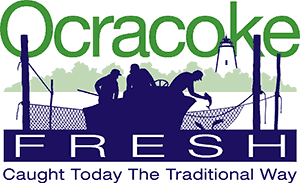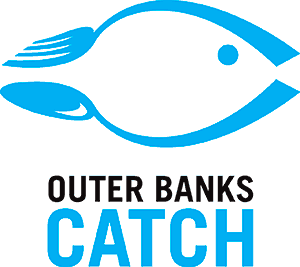What’s the Catch?
If you’re looking for fresh, local seafood, NC Catch helps you find it.
By Hannah MillerClick on the photo to view slideshow.
Pleasant images of the fishing life have long been lodged in North Carolinians' brains — shrimp boats returning at sunset, tables groaning under loads of fresh-shucked native oysters.
But these days, due to a variety of factors including competition from imports, high fuel costs and restrictions on what's caught, the professional fisherman is practically an endangered species in North Carolina. In the years between 2000 and 2011, the number of commercial fishing licenses in use dropped one third, to 3,700, says North Carolina's Division of Marine Fisheries.
In the 1970s and 1980s, fishing was a good life "for a young man that wants to be on the water," says former fisherman Jon Haag of Oak Island. But more recently, says Haag, a Brunswick EMC member who sells what others catch through Haag & Sons Seafood, fishermen "have had a really difficult time trying to make a living."




In 2004, fishermen in Carteret County decided to fight back, joining with restaurant owners and seafood dealers in forming Carteret Catch to extol the merits of local seafood. Soon, other fishing communities followed suit, forming Brunswick Catch in Brunswick County and Outer Banks Catch in Tyrrell, Hyde, Currituck and Dare counties.
On Ocracoke Island, the Ocracoke Working Watermen's Association formed to establish and run a co-op fish house. Besides providing ice and dock space, the fish house is the site of wholesale sales under the Ocracoke Seafood name and retail sales of the Ocracoke Fresh brand.
The Catches had the help of electric cooperatives, the N.C. Department of Agriculture and Consumer Services, and the UNC-affiliated research and education organization Sea Grant.
On Ocracoke, says Tideland EMC member and watermen's association president David Hilton, "They (Tideland) were a wonderful corporate sponsor. Helped supply us a line of credit in case we needed it."
Grants from Brunswick EMC, one of the first corporate sponsors of Brunswick Catch, have helped fund a billboard/media campaign and Web coverage of the area's fishing heritage.
Last year, with help from the N.C. Rural Economic Development Center, the Catches formed an umbrella network, NC Catch.
"People are looking for fresh and local," says former shrimper Pam Morris, a founder of Carteret Catch. "They are health conscious, environmentally conscious."
The North Carolina product fits the bill in both variety and freshness, say those involved. Jon Haag estimates there are 150 to 175 species inshore and offshore.
On Ocracoke, says David Hilton, "in many instances what we have in retail was put on the dock that morning."
And in Nags Head, award-winning chef Bud Gruninger of Lone Cedar Cafe says that in his well-traveled 40-year career, he's never handled seafood "as quality and as good" as what he gets now.
Truth in labeling
The problem, Carteret County people found, was a lack of labeling. People had no way of knowing whether what they were eating was locally caught or part of the 91 percent of US seafood that NOAA (National Oceanic and Atmospheric Administration) says is foreign imports. "They would see a shrimp boat tied up at the dock and (sometimes erroneously) assume the seafood they were getting here at the coast was local seafood," says Pam Morris.
The Catches educate the public through logos that participating restaurants put on their menus and fly on flags, through billboards and print advertisements, and at seafood festivals and other celebrations. "Ask where your fish comes from," they urge the public.
They also communicate through Facebook and lively Web pages offering recipes and tips on selecting fish.
Extending the reach
As the Catches have brought local seafood front and center, various entrepreneurs have been extending its reach, geographically and in terms of products. Much of the catch historically has been trucked to northern cities. Now, some innovative fishermen and dealers are trying to move sales "west instead of north," says Dorothy Killingsworth, NC Catch executive director.
In the Raleigh-Durham-Chapel Hill area, students in Duke University's Nicholas Center for the Environment in 2009 joined with the fishing community in Carteret County to establish Walking Fish CSF (Community Supported Fishery). CSFs are patterned after CSAs (Community Supported Agriculture), with consumers paying an upfront fee for shares in the upcoming harvest.
"Walking Fish demonstrated that people will buy product if it's delivered...and will even pay a premium price for a good quality, fresh-caught product," says Sara Mirabilio, fisheries specialist with Sea Grant.
Now, the catch of 15 fishermen is delivered to communal drop-off points, where several hundred customers yearly get not only fish but a connection to the fishing life. Shareholders can even sign up for a crab pot and see it being emptied, courtesy of a video camera carried by the crabber.
A second CSF, Core Sound Seafood, formed in Carteret County in 2010 to sell in the same Triangle area. "We may send shrimp and flounder this week, blue fish and crabs next week," says Alison Willis, a member of Carteret-Craven Electric Cooperative who along with her husband, Eddie Willis, is one of the organizers. Affiliated fishermen get from 25 cents to $1 more per pound than if they were selling through a dealer, she says.
Delivery services that lack the shareholder aspect of CSFs have sprung up, and Haag, promoting the Brunswick Catch name, supplies several in the Triangle area that also sell North Carolina-grown produce and meat. Haag says that when he has to sell non-Brunswick Catch seafood, he buys from NC Catch members because his customers like the feeling of "greater accountability" that local fish provides.
The fine-dining restaurants and oyster bars of Charlotte, Raleigh and Atlanta are the destination for the oysters that James Morris Jr. painstakingly grows in floating cages on Harkers Island. The Carteret-Craven cooperative member says that his intensive farming for the half-shell market is "like growing tomatoes," with uniformly perfect oysters the goal. Hurricanes and other storms make it a risky business, he says, but the half-shell market pays double what wild oysters would bring.
Another market expansion is under way at Mattamuskeet Seafood in Swan Quarter, where Tideland EMC member Sherrie Carawan and her family have expanded from packing crabs and oysters for out-of-state markets to making Crabbers Choice crab cakes. They include country ham and sharp cheese and "everybody loves them," says Carawan. They're sold to the bear, deer and waterfowl hunters who flock to the area, and to retail outlets in Raleigh and on the Outer Banks.
On the horizon?
At least one fisherman and Outer Banks Catch member, Dewey Hemilright of Kitty Hawk, thinks the Catches don't go far enough in presenting a picture of the fishing industry. They should, he says, "tactfully" warn about the consequences of problems like Oregon Inlet shoaling and what he sees as overregulation of catch.
Then, says Hemilright, who fishes for croaker, tuna and swordfish out of Wanchese, it won't come as a surprise "if all of a sudden you could lose your access to this seafood, and your other choice is tilapia."
On Oak Island, Haag admits that preserving livelihoods and the fishing heritage is tough. "It seems like it's dwindling as fast as we can keep up with it." Yet he knows that the marketing efforts are making a difference. "When people do go in (a restaurant or fish house), they ask what's caught here," he says.
About the Author
Carolina Country contributing writer Hannah Miller vacations each summer on North Carolina’s coast and is especially fond of the local seafood at Southport’s Fishy Fishy Café and Mr. P’s Bistro.-
Share this story:
{ampz:Custom share for module}








